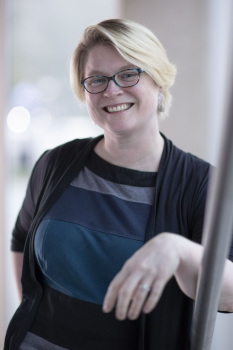Nishan Senanayake defends Ph.D. thesis

On July 22, Nishan Senanayake successfully defended his Ph.D. thesis, “Multi-variate process models for predicting site-specific microstructure and properties of Inconel 706 forgings.”
Senanayake, who is originally from Sri Lanka, was drawn to the "critical thinking and problem solving" aspects of the materials science and engineering field. His Ph.D. research mainly focused on building process-structure-properties to optimize the mechanical properties of Ni-based superalloys using high throughput methods and data science approaches.
During Senanayake’s Ph.D. studies, he interned at NASA Glenn Research Center in Cleveland and NASA Ames Research Center in Mountain View, Calif. He described himself as “really fortunate” to have been able to work with the NASA researchers, as well as with “excellent professors and researchers'' at CWRU. He is particularly thankful to his advisor, Associate Professor Jennifer Carter, for “being supportive and encouraging me throughout my Ph.D. studies.”
Outside of the engineering arena, Senanayake took the initiative to form the Sri Lankan Student Association in collaboration with fellow students to contribute to globalization and diversity by organizing cultural and social events. He currently serves as president.
After he graduates from CWRU in August, Senanayake hopes to work in industry as a materials data scientist, with a long-term goal of “contributing something impactful to society with my skills.”
"I need to thank my family, friend, colleagues from the Mesoscience Lab, and the faculty and staff at CWRU for helping me to achieve this milestone,” said Senanayake.
Senanayake’s abstract:
The development of the quantitative PSP model requires the collection of disparate datasets that involves standard experiments (data-driven methods) or physics-based computational methods that simulate required output data. Data-driven approaches involve an immense amount of time and cost-consuming data collection processes. Physics-based computational simulations are not capable of simulating property metrics and are also required to be experimentally calibrated due to their less fidelity. Because of these reasons, both approaches are challenging and motivate an enormous demand for accelerated, high-throughput, approaches. Further, in previous studies, both approaches (data-driven and simulations) functioned as two separate branches and were not integrated. Materials informatics, enabled by high-throughput approaches could overcome these challenges and corporate the data-driven and computational simulations that allow engineers to quantitatively measure the critical microstructure properties and design the processing routes to improve the material performance of Ni-based superalloys. If successful, this approach effectively provides a value-added proposition to be better stewards of the manufacturing digital thread. This is the start of engineering solutions, moving the design of forging processes from a heuristic process, and beyond Industry 4.0, merging both the internet of things with physics-based understandings of material state evolution.
In this work, high-throughput procedures have been developed that benefit both data- driven and computer simulation approaches. Both approaches were integrated together to establish PSP linkages for IN706 forgings. The PSP linkage outlined in this study is developed using heritage data that includes multi-dimensional data, proxy experiments, machine learning- based image processing, and CALPHAD (CALculation of PHAse Diagrams) simulations. This work contributes to the scope of materials design by (1) developing data-driven, high throughput, assays for exploring PSP linkages in Ni alloys, (2) employing machine learning to accelerate microstructure quantification, and (3) generating and integrating data from different sources into a predictive knowledge base.

